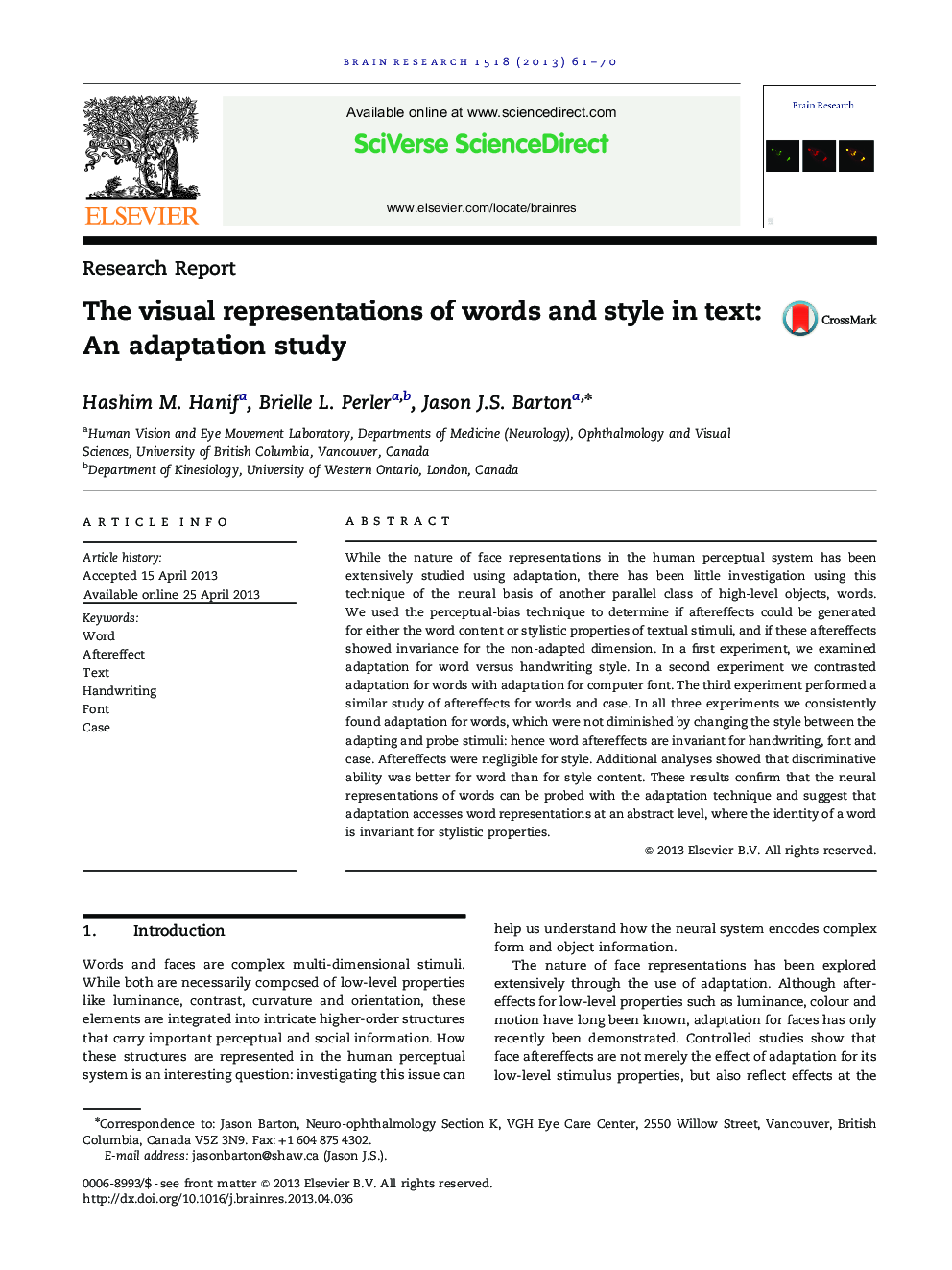| Article ID | Journal | Published Year | Pages | File Type |
|---|---|---|---|---|
| 4324653 | Brain Research | 2013 | 10 Pages |
•Perceptual-bias aftereffects for words can be produced after 5 s of adaptation.•Word aftereffects are invariant for stylistic properties such as handwriting, font or case.•Style aftereffects are minimal.•Discriminative ability is superior for word content than that for stylistic properties of text.
While the nature of face representations in the human perceptual system has been extensively studied using adaptation, there has been little investigation using this technique of the neural basis of another parallel class of high-level objects, words. We used the perceptual-bias technique to determine if aftereffects could be generated for either the word content or stylistic properties of textual stimuli, and if these aftereffects showed invariance for the non-adapted dimension. In a first experiment, we examined adaptation for word versus handwriting style. In a second experiment we contrasted adaptation for words with adaptation for computer font. The third experiment performed a similar study of aftereffects for words and case. In all three experiments we consistently found adaptation for words, which were not diminished by changing the style between the adapting and probe stimuli: hence word aftereffects are invariant for handwriting, font and case. Aftereffects were negligible for style. Additional analyses showed that discriminative ability was better for word than for style content. These results confirm that the neural representations of words can be probed with the adaptation technique and suggest that adaptation accesses word representations at an abstract level, where the identity of a word is invariant for stylistic properties.
